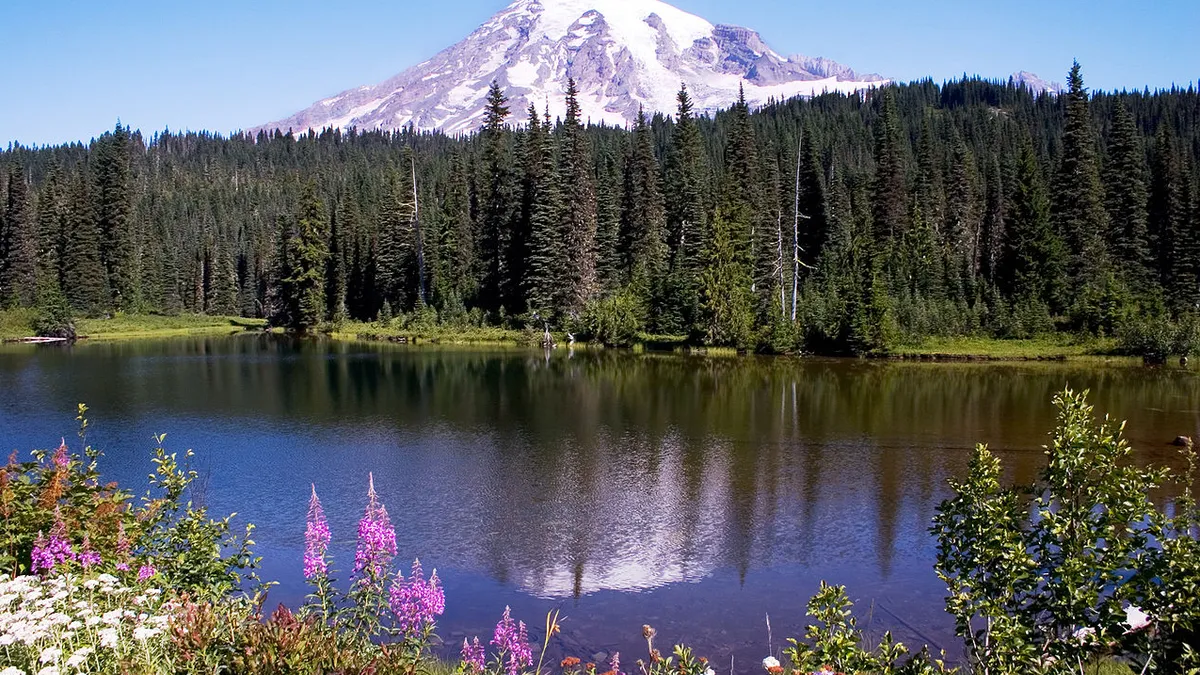Dive Brief:
-
State regulators on Monday signed off on the integrated resource plans of Washington’s three investor-owned utilities, but with a recommendation for the next IRPs.
-
The state’s Utilities and Transportation Commission directed Avista, Pacific Power and Puget Sound Energy to reconsider their reliance on coal-fired power plants in future IRPs.
-
More specifically, the UTC directed the utilities to use a more robust cost of carbon estimate in their next IRP, which will be filed for 2019.
Dive Insight:
The utilities that serve Washington State have been moving away from coal-fired power, but going forward the UTC wants the utilities to step up those efforts. And it wants them to improve consideration of carbon costs in their estimates of future resource needs.
The latest IRPs of the three utilities are heavy with the addition of renewable resources and are marked by projections of declining demand. But the UTC wants to see less reliance on fossil fuels in the next iteration of the process, which will be the 2019 IRP. Washington utilities file IRPs every two years.
PacifiCorp’s 2017 IRP includes 1,311 MW of new wind farms and the repowering of about 999 MW of existing wind capacity. PacifiCorp’s plan also includes a new 140-mile, 500 kV transmission line in Wyoming. All those resources are slated to be in service by the end of 2020.
Through the end of 2036, PacifiCorp’s plan includes over 2,700 MW of new wind resources, 1,860 MW of new solar resources, 1,877 MW of incremental energy efficiency resources and about 268 MW of direct-load control resources. The utility noted that its 2017 IRP is the first that has not included new fossil-fueled generation. The IRP also factors in PacifiCorp’s plans to reduce its coal-fired capacity by 3,650 MW through the end of 2036.
PacifiCorp plans to retire unit 3 at its Naughton plant at the end of January 2019, unit 4 at its Cholla plant at the end of 2020, unit 3 at its Dave Johnston plant at the end of 2027, and units 1 and 2 of the Jim Bridger plant in Wyoming at the end of 2028 and 2032, respectively.
In its IRP, Puget Sound Energy notes that solar power in eastern Washington appears to be cost effective for the first time. The utility also plans to redirect a transmission line to the Mid-C market to allow it to expand its access to short-term bilateral markets. And PSE said it plans to use energy storage and demand response instead of fossil fuels.
PSE is also one of the owners of the Colstrip coal plant. The utility says retiring Colstrip units 1 and 2 sooner than the planned date of 2022 would be uneconomic.
PSE also acknowledges that the 20 year projections in its 2017 IRP are lower than in its preceding IRP. The utility said that after it applies demand-side resources, average energy demand is expected to increase at 0.4% annually, with peak growth at 0.6% per year.
Avista’s IRP also included estimates of lower demand than in its previous IRP, which it attributed primarily to declining residential use because of energy efficiency standards. Avista said its lower load expectations mean it can delay building new capacity until 2026. The utility said its preferred resource mix for the next 20 years includes a mix of solar, demand response, energy efficiency, storage, upgrades to existing assets and new natural gas-fired generation. Avista said energy efficiency could offset more than 50% of projected load growth through the 20-year IRP planning horizon. Avista also said that it included energy storage in its 20 year outlook for the first time because costs have come down.
In responding to the utilities’ IRPs the UTC expressed concern about the continued operation of coal plants, particularly the Colstrip and Bridger plants in Montana and Wyoming, respectively. The commission is concerned about the “magnitude of economic risk” the utilities face with their continuing investment in those plants.
The UTC acknowledged that the Trump administration is trying to repeal and replace the Clean Power Plan that would have imposed greenhouse gas restrictions on power plants, but also noted that individual states have been taking independent action on GHG issues.
Washington has promulgated the Clean Air Rule, which requires several sectors, including power plants and natural gas distributors, to cap and gradually reduce carbon emissions. The rule is now facing legal ambiguity, but in the past two years there have been more than a dozen bills introduced in the state legislature that would impose a cost on GHG emissions or place limits on emissions.
The takeaway, the commission said, is “there continues to be considerable legislative and regulatory risk associated with greenhouse gas emissions.”
To address those concerns and risks, the UTC directed the state’s utilities “to place more emphasis on studying and responding to developments in state and federal carbon policy.”
The utilities need to recognize the risks and uncertainties associated with greenhouse gas emissions and identify “a reasonable, cost-effective approach to addressing them,” the commission said.
The UTC told the utilities to use a comprehensive, peer-reviewed estimate of the monetary cost of climate change damages and suggested estimates by the Interagency Working Group on Social Cost of Greenhouse Gases.
In 2018, the cost of carbon is $40 per metric ton and in 2020 it will be $42.
The Interagency Working Group on Social Cost of Greenhouse Gases is itself undergoing political challenges. The group was formed by President Barack Obama, but disbanded by President Trump via executive order, However, the group is still working, E&E reports.














